Introduction to Hormone Replacement Therapy (HRT)
Hormone replacement therapy (HRT) is a widely used treatment designed to replenish hormones that the body stops producing during menopause.
This therapy is particularly beneficial for postmenopausal women who experience a range of uncomfortable symptoms due to the decline in hormone levels. By reintroducing these hormones, HRT aims to alleviate menopausal symptoms and improve overall quality of life.
HRT can significantly reduce the severity of hot flashes, night sweats, and vaginal dryness, which are common complaints among menopausal women.
Additionally, it plays a crucial role in preventing osteoporosis, a condition characterized by weakened bones, and may also help in reducing the risk of heart disease.
Understanding the various aspects of hormone replacement therapy can empower women to make informed decisions about their health and well-being during the menopausal transition.
What is Hormone Replacement Therapy (HRT)?
Hormone replacement therapy (HRT) involves the administration of hormones, typically estrogen and progesterone, to replace those that the body no longer produces after menopause.
This treatment is also known as hormone therapy, menopausal hormone therapy, and estrogen replacement therapy.
The primary goal of HRT is to alleviate the distressing symptoms of menopause, such as hot flashes, night sweats, and vaginal dryness, which can significantly impact a woman’s quality of life.
Beyond symptom relief, HRT offers additional health benefits. It helps in preventing osteoporosis by maintaining bone density, thereby reducing the risk of fractures.
Moreover, HRT can contribute to cardiovascular health by mitigating some of the risks associated with heart disease in postmenopausal women.
By addressing both the immediate and long-term health concerns associated with menopause, hormone replacement therapy provides a comprehensive approach to managing this natural life transition.
In summary, hormone replacement therapy is a valuable option for many postmenopausal women, offering relief from menopausal symptoms and protection against certain health conditions.
As with any medical treatment, it is essential to discuss the potential benefits and risks with a healthcare provider to determine the best course of action tailored to individual needs.
So, if you are looking for more information and want a personalized HRT plan set up for you, our team of healthcare experts at Rejuvenate HRT is ready to help!

Understanding Hormone Replacement Therapy (HRT)
Hormone replacement therapy (HRT) is a medical treatment designed to treat menopausal symptoms by replenishing hormones that the body no longer produces.
As women transition into menopause, they often experience a decline in hormone levels, particularly estrogen and progesterone, which can lead to various uncomfortable symptoms.
HRT can address a range of symptoms, including:
Hot Flashes: Sudden feelings of warmth, often accompanied by sweating.
Vaginal Dryness: Discomfort during intercourse and other activities.
Mood Changes: Increased irritability, anxiety, or depression.
Systemic hormone therapy is often used to address these symptoms.
Understanding the different types of HRT is essential for making informed decisions about treatment options. These types include:
Estrogen Therapy: Administered alone or in conjunction with progesterone.
Progesterone Therapy: Used to counteract the effects of estrogen and protect the uterine lining.
Combination Therapy: Utilizes both estrogen and progesterone.
Benefits of Progesterone HRT
Alleviating Menopausal Symptoms
Progesterone hormone replacement therapy offers several benefits that can significantly enhance a woman’s quality of life during menopause:
Hot Flashes and Night Sweats: Progesterone can help alleviate the intensity and frequency of hot flashes and night sweats, providing much-needed relief during this transitional phase.
Improved Sleep Quality: Many women report better sleep quality after beginning progesterone therapy, which can reduce the insomnia often associated with menopausal symptoms.
Mood Stabilization: Progesterone has a calming effect on the brain, which can help reduce anxiety and depressive symptoms, contributing to overall emotional well-being.
Bone Health: By counteracting the effects of estrogen loss, progesterone therapy can help protect against osteoporosis, lowering the risk of fractures and maintaining bone density.
Vaginal Health: Progesterone can alleviate vaginal symptoms such as dryness, itching, and discomfort, enhancing sexual health and intimacy.
Systemic therapy is one of the methods used to deliver progesterone effectively.
How Progesterone HRT Works
Progesterone HRT functions by supplementing the progesterone hormone that the body ceases to produce during menopause. This hormone plays several crucial roles, including:
Regulating the Menstrual Cycle: Progesterone helps maintain the uterine lining, which is important for women who have not undergone a hysterectomy.
Reducing Cancer Risk: It helps mitigate the risk of uterine cancer that can arise from estrogen-only therapy by balancing estrogen’s effects on the uterus. Historical research has shown that combining progestins with estrogen is essential to protect against uterine cancer, especially for women who have not had a hysterectomy.
Progesterone can be administered in various forms, including:
Oral Pills: Convenient and easy to take.
Transdermal Patches: Deliver a steady dose through the skin.
Vaginal Creams or Rings: Offer localized relief for vaginal symptoms.

Who Can Benefit from Progesterone HRT?
Candidates for Progesterone Therapy
Women Experiencing Menopausal Symptoms: Women suffering from hot flashes, night sweats, and vaginal dryness may find relief through progesterone HRT. The North American Menopause Society provides guidelines on who should consider HRT.
Women at Risk for Osteoporosis: Those with a family history of osteoporosis or who are already experiencing bone density loss could benefit from the protective effects of progesterone.
Post-Hysterectomy Women: Women who have had their uterus removed may not require progesterone therapy, but they can still benefit from estrogen therapy alone.

Potential Risks and Side Effects of Progesterone HRT
Common Side Effects
While progesterone therapy offers significant benefits, it’s essential to be aware of potential risks and side effects, including:
Weight Gain: Some women report changes in weight, often due to fluid retention.
Breast Tenderness: Hormonal changes can lead to sensitivity or discomfort in the breasts.
Mood Changes: Fluctuations in hormone levels may result in mood swings or changes in emotional well-being.
Serious Risks
More serious risks associated with progesterone HRT include:
Blood Clots: Increased risk of thromboembolic events, especially in women with a history of blood clots.
Breast Cancer: Long-term use of combined hormone therapy may elevate the breast cancer risk. Several large studies, including the Women’s Health Initiative, have identified a significant association between hormone therapy and an increased risk of breast cancer in postmenopausal women.
Endometrial Cancer: Although progesterone reduces this risk, it is still a concern in women taking estrogen alone.
Contraindications
Certain conditions may preclude the safe use of progesterone HRT:
History of Breast Cancer: Women with a personal history of breast cancer should avoid progesterone therapy.
Blood Clot Disorders: Conditions like deep vein thrombosis or pulmonary embolism pose significant risks with hormone therapy.
Pregnancy or Breastfeeding: Women in these stages should not take progesterone HRT.
Monitoring and Follow-Up Care
Regular monitoring and follow-up care are crucial for women undergoing progesterone HRT. This may include:
Routine Check-Ups: Regular appointments with a healthcare provider to assess the effectiveness of therapy and monitor side effects.
Mammograms and Pelvic Exams: Routine screenings to detect any potential health issues early.
Blood Tests: To monitor liver and kidney function, especially if the patient has a history of liver disease.
Enhancing Quality of Life with Progesterone HRT
Many women report improved quality of life after starting progesterone HRT. It can alleviate bothersome menopausal symptoms, thereby enhancing daily functioning and emotional well-being. Key improvements often noted include:
Reduced Hot Flashes and Night Sweats: A significant decrease in menopausal discomfort.
Better Sleep Quality: Many women experience improved sleep patterns as hormonal balance is restored.
Emotional Stability: A reduction in mood swings and anxiety.

Frequently Asked Questions
What does progesterone hormone therapy do?
It alleviates menopausal symptoms, promotes bone health, and reduces the risk of endometrial cancer.
What happens if you take progesterone without estrogen?
This may be appropriate for women who have had a hysterectomy, but those still having menstrual cycles typically need both hormones for balance.
Does progesterone cause weight gain?
Some women may experience weight gain or fluid retention; however, this varies by individual.
Do I need progesterone as well as estrogen?
Women with a uterus generally need both hormones, while those who have had a hysterectomy may require estrogen alone.
Benefits of Progesterone Hormone Replacement Therapy for Women Conclusion
Progesterone hormone replacement therapy can effectively address menopausal symptoms and improve quality of life for many women.
It is a great option for women who want to get their life back and begin to feel like themselves again. If you think this type of treatment may be a good option for you, set up a consultation with our team of healthcare experts and get all the detailed information you need.
We will walk you through every step of the process and create a personalized treatment plan for your specific needs.


